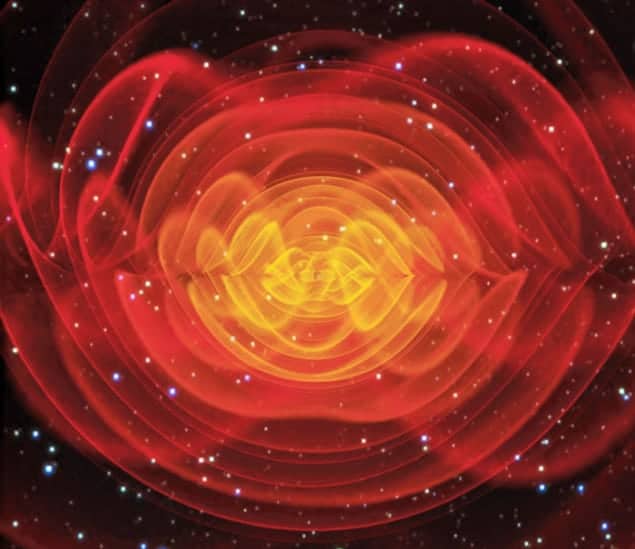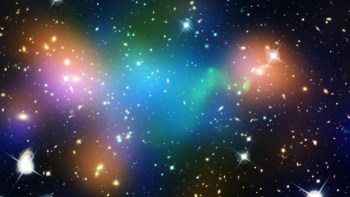
Results and data from the Advanced Laser Interferometer Gravitational-wave Observatory (aLIGO) collaboration – which revealed last week that it had observed a gravitational wave for the first time – are already providing astronomers and cosmologists the world over with previously unknown information about our universe. While the current results have posed intriguing questions for astronomers regarding binary black-hole systems, gravitational-wave astronomy will also revolutionize our understanding of the universe during its infancy, according to cosmologist and Perimeter Institute director Neil Turok.
Many scientists, such as LIGO veteran Kip Thorne, have pointed out that the collaboration’s results have opened a new window onto the universe. Each time that this has happened in the past, unexpected phenomena have come to light – for example, the advent of radio astronomy revealed the universe’s most luminous objects in the form of quasars and pulsars.
Pristine objects
Turok told physicsworld.com that black holes – some of the most prolific producers of these ripples – are some of the simplest objects in the universe. He points out that when it comes to these “perfectly pristine objects”, there are “not too many parameters that need to be determined” because a black hole’s dynamics are mainly determined by its mass. Turok also points out that gravitational waves will provide even deeper insights, as they involve the fundamental force of gravity, which itself is still something of a puzzle.
Indeed, for Turok, this is what is most exciting about aLIGO’s discovery, which he says “may mark a bit of a transition as gravitational-wave observatories become the high-energy colliders of the future as we probe gravity and other extremely basic physics”. Gravitational waves can go to a time/place that, currently, we have very little information about – the early universe, which is opaque to all electromagnetic radiation.
Looking back in time
Thankfully, gravitational waves can travel freely through the hot plasma of the early universe and could be used “to look back to a trillionth of a second after the Big Bang”, according to Turok. For him, the discovery is very timely, as he is currently working with colleagues on a new theoretical proposal for “shockwaves” produced a millionth of a second after the Big Bang, which would have been present across all scales in the early universe. If these shockwaves exist, they would have an effect on the measured density variation that is seen in the cosmic microwave background, and could only be detected by gravitational radiation. Once they have a more complete theoretical description, Turok is convinced that LIGO and its successors such as the LISA Pathfinder and other space-based experiments could pick up the shockwave signal, if it exists.
Ultimately, Turok is delighted by LIGO’s discovery, and although he says that it is “much more important than any prize”, he is sure that it will win not only a Nobel prize, but also a slew of others, such as the Breakthrough prize.
A preprint of Turok’s paper on shockwaves is available on the arXiv server.
More on gravitational waves and LIGO
- LIGO detects first ever gravitational waves – from two merging black holes
- Relativity’s new revolution
- Upgraded LIGO will begin hunt for gravitational waves soon
- How can we detect gravitational waves?
- Has Advanced LIGO found gravitational waves?
- New insights emerge from LIGO’s gravitational-wave data
- Indian gravitational-wave observatory wins governmental approval
- What is a gravitational wave?
- Nergis Mavalvala on the upcoming Advanced LIGO run
- Launch of LISA Pathfinder probe heralds new era in search for gravitational waves
- Gravitational waves detected. Einstein was right…again
- Classical and Quantum Gravity free-to-read collection of papers on gravitational waves



